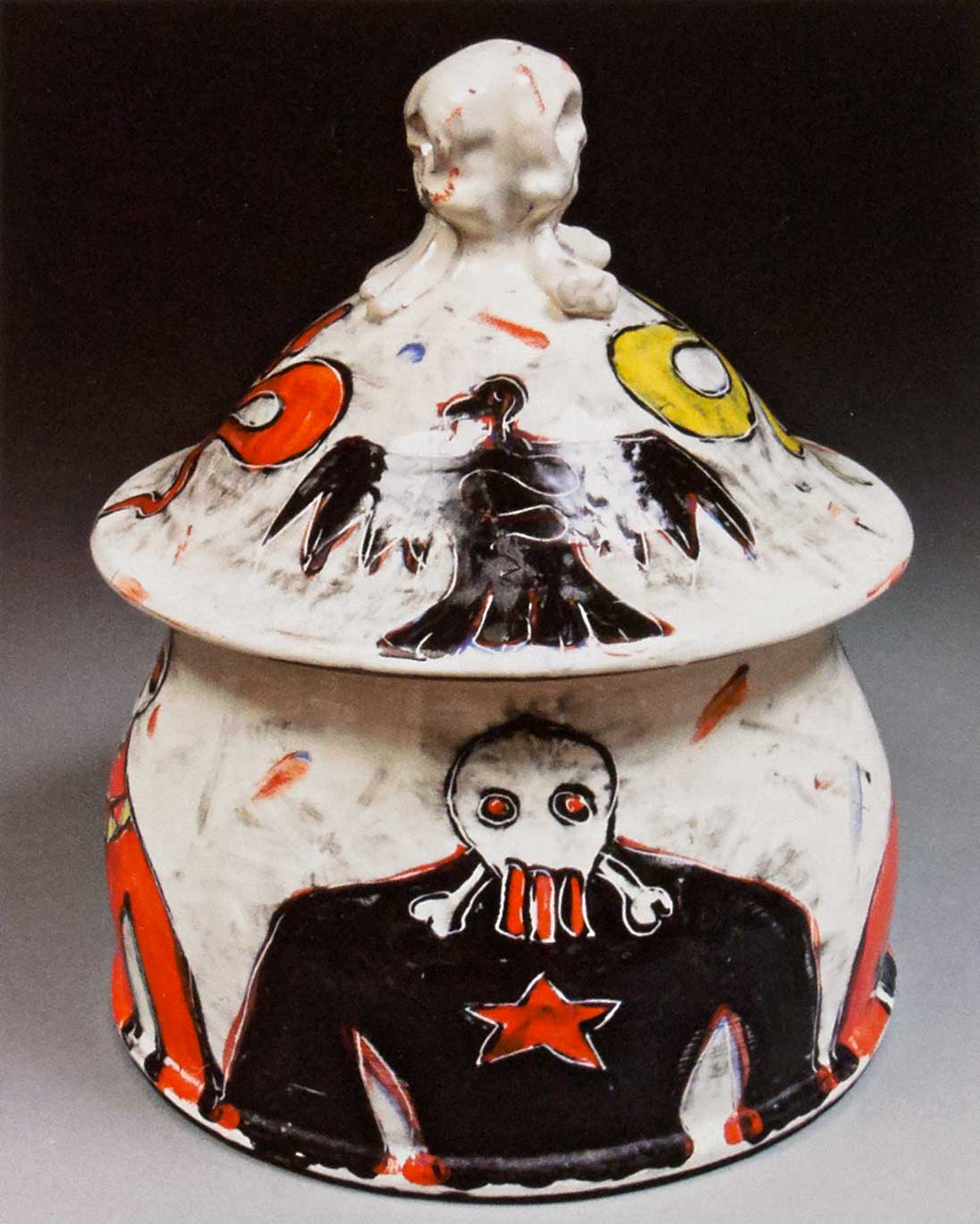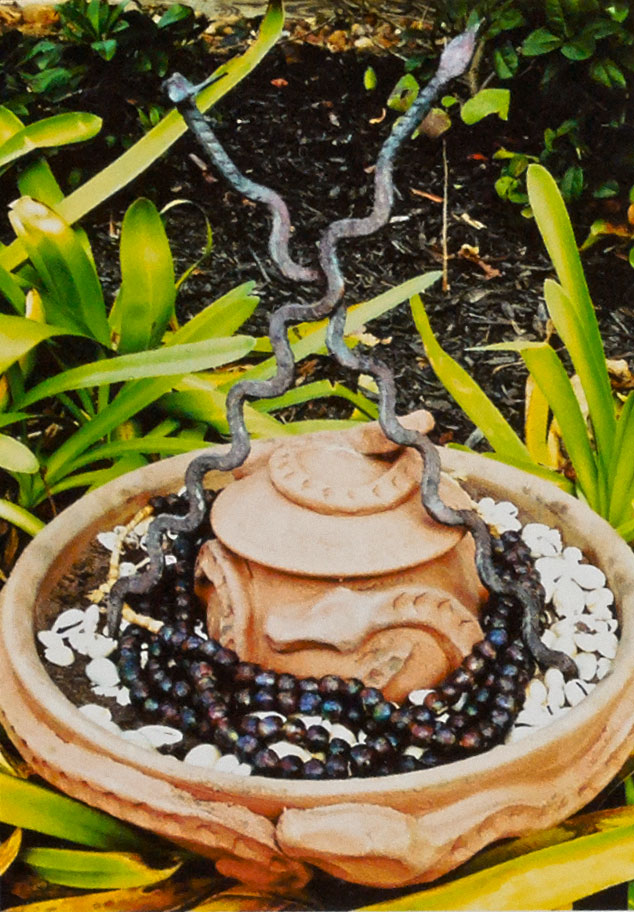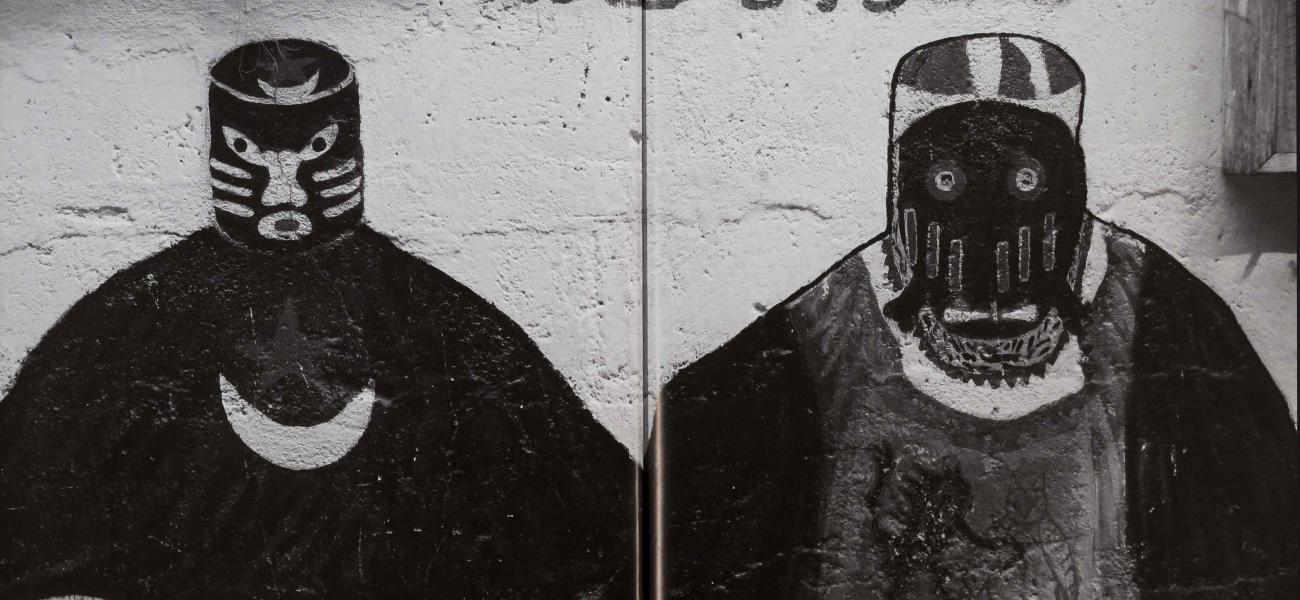To Serve the Divine
African and African-Pan-American religious-cultural systems make use of an array of ceramic vessels and objects. Within these cultures, special pots are understood to literally house divinity and are receptacles for detailed and painstaking spiritual offerings. In some cases the pots reside in lavish altar cabinets, surrounded by fine fabrics, statuary, wood carvings, and beaded items. In other contexts, they lie in repose on earthen floors, bathed in rum-mist, cigar smoke, candlelight, and shadow. They are sung to, drummed to, beseeched and prayed to.
It has been the greatest challenge and most humbling experience of my artistic career to participate in the making of these pots. In hopes of paying tribute to the cultures and individuals who have allowed me to make pieces for them, schooled me in the faiths, and provided so much inspiration for my personal work, I offer this article. Additionally, I hope it presents a broadened vision of the potential roles for functional pots.
Growing up in the southeastern United States, I became aware at a young age of the African- American practices of folk-healing and -harming, variously known as hoodoo, conjure, and rootwork. I frequented a hoodoo store masquerading as a joke shop, with a few sorry card tricks and whoopee cushions gathering dust in the display cases. As a young "whiteboy" I received some strange looks, but it didn't take a detective to discern that there was something secret and compelling happening behind the beaded curtain, from which the smells of incense and candle wax emitted. This was my introduction to African spiritual practices that had been transported to the New World as a result of the cataclysmic trauma of transatlantic slavery. My curiosity sparked, I have spent more than half of my life investigating, researching, and eventually participating in various manifestations of African religion as they reemerged in the Americas. It is only more recently that I have made pottery for use within these faiths.
In order to gain an understanding of this use of pottery, it is necessary to point out some of the basic characteristics shared by the various cultural practices concerned. Throughout the Americas, wherever African culture took root (which is almost everywhere), certain neo-African or African-Atlantic religions came into being. The majority of the Africans forcibly brought across the Atlantic were citizens of west and west-central Africa, and many of the people in the enslaving cultures, especially those in the Caribbean and Latin America, were Catholic. A hybridized form of religion and cultural practice was created, particularly in the Caribbean, Central America, and South America, but also in a few North American locations such as southern Louisiana and the Sea Islands of South Carolina and Georgia. In most instances a core of west and central African cosmology was augmented and embellished by, if not merged with, Catholicism. The resulting religious forms were many and distinct, including Vodou in Haiti; Lucumi (often known as Santeria) in Cuba; Shango-Baptist in Trinidad; Candomble, Umbanda, and Quimbanda in Brazil; Obeah in Jamaica and Trinidad; and Palo Mayombe in Cuba. It is extremely important to note that each of these religions represents a unique and complete cultural system, and that they resemble one another only in general terms. These various religions could be compared to Judaism, Christianity, and Islam, which are all "traditions of The Book" but are quite distinct from one another.
The common cosmology of the African religions in the Americas includes a singular but remote God, served by a contingent of spirits or lesser deities, who function as intermediaries with human beings. It is these spiritual beings (known as Lwa in Vodou, Orisha in Lucumi and Candomble, and Mpungo in Palo Mayombe) with whom human beings deal on a daily basis, God being far too remote and busy to be concerned with the everyday lives of individuals. These lesser divinities are often identified with a specific aspect of nature (for instance the Orisha Yemaya, who is associated with the oceans, and Siete Rayos, the Mpungo of fire and lightning). It is quite apparent how believers of this conception of the universe, with a Creator God served by a bevy of lesser divine beings, have drawn parallels with the Catholic cosmology, namely God and the saints.
In addition to this basic understanding of the cosmos, most of these religions share practices, including drumming, singing, prayer, and dance, as essential modes of devotion, as well as a belief in spiritual possession (universally understood to be beneficent and desirable). All these religions have their own distinct, complex, and specialized understanding of such concepts as the human soil, guidance through divination, the afterlife, and initiation.
It should be reiterated in no uncertain terms that these religions are distinct and independent from one another, and any shared characteristics must be understood to be general in nature. However, in all these faiths crafted objects play an indispensable role, as important as song, rhythm, and dance. Key material components include intricately beaded necklaces and bead-encrusted sculptural objects, wooden statuary and vessels, drums and other instruments, various cloth objects (including in some cases very ornate initiatory garb), drawn sigils (invocational designs), and pottery.

Kept within an open or lidded clay pot, metal cauldron, or wooden jar are sacred materials: plant, animal, and statuary considered to be appealing to, emblematic of, and nourishing for a specific divine entity. The vessel is a temporary abode for a spirit, or more accurately, for a small facet of an unfathomably vast spiritual essence. The style, size, and material of these vessels vary widely, ranging from a colossal Palo Mayombe iron cauldron, filled with material including dirt, iron objects, sticks, rocks, and bones and weighing hundreds of pounds, to a minute halved and dried gourd holding a few stones, to a plain terra-cotta pot or a baroque porcelain soup tureen. Typically, an initiate may own one vessel dedicated to a single spiritual force, while a senior priest may possess many of these sacred pots representing a complete pantheon.
Though I have made pots for practitioners of African Ifa-Orisha and Brazilian Candomble and have a Haitian Vodou project currently under consideration, the majority of my work for these practices has been commissioned by practitioners of the two primary African-Cuban religions, the west African Yoruba-derived Lucumi and the central African-derived Palo Mayombe, or simply Palo.
Lucumi and Palo Mayombe have distinct aesthetic currents, the former being lavish, elaborate, and refined, and the latter being earthy, rugged, and visceral. Long ago the sacred items of Lucumi's Orisha were kept in hollow gourds, and later plain clay pots were the chosen vessels. Eventually it became the accepted norm for imported mass-produced porcelain, primarily soup tureens known as soperas and lidded jars called tinajas, to be used as Orisha vessels, and this is the nearly universal choice in contemporary practice. This usage represents a sort of aesthetic resistance, in which the proponents of a much-maligned and underground culture usurp the accoutrements that are the very signifiers of value and status among their cultural oppressors.
The Palo Mayombe faith makes use of all sizes of metal cauldrons and cooking pots, as well as plain or decorated clay pots. For the most part, the vessels of Palo are unadorned or simply decorated with sacred linear symbols known as firmas. In many cases a multitude of vessels may be arranged within a shrine-building, accompanied by all manner of statuary, painted images or cloth hangings on the walls, animal products, and beaded objects.
There is a general appreciation of crafted objects, and this inspires some practitioners to seek out handmade work, whether beadwork, woodwork, or ceramics. One of the greatest pleasures of doing this work has been the chance to make series of ritual vessels for a number of individuals. One of my most comprehensive projects to date was to make a set of pots for the personal pantheon of priest Awo Fáladé Òsúntólá, who has received initiations in both Haiti and Benin Over the course of producing a number of significant pieces, I was able to have a lengthy exchange with
him, and he explained to me in detail the significance of the deity for whom each piece was intended, as well as providing me with personal photographs of both traditional pots and ritual practices in Benin.

In addressing my personal position in relation to these practitioners and communities, it is important to state that there is a fairly wide range of involvement possible in any of the faiths concerned. It is certainly permissible to be a casual participant; however, access to certain symbolic and ritual knowledge and experience is closely guarded, and there comes a point at which one is either "in" or "out." Full participation is only granted when an individual makes the personal commitment, is given permission, and accepts the responsibility conferred by ritual initiation. During the course of my time making pottery for ritual use, my status has evolved from interested outsider to semi-participant to full initiate. I found it important from the perspectives of both potter and traditional participant to follow this gradual course. On the one hand, though clearly a cultural outsider in terms of my upbringing, I came to the traditions with at least a minimal skill to offer. On the other hand, I'm hopeful that this unique experience allows me to bring something back to the contemporary pottery community: an expanded vision of the potential of functional pots and the inspiration gained from vibrant, though largely unknown, cultures.
Along the way, two individuals have been particularly instrumental in my development as a maker of religious vessels, one a folklorist and priest of Palo Mayombe and the other both an art historian and Lucumi initiate. Possessing the dual perspectives of academic and priest, each of them has been an indispensable gateway into his religious community.
Though I continue to consider the making of sacred pottery separate from my personal work, the two types of work have certainly influenced one another. I have received tremendous inspiration from the visual culture related to African and African-Caribbean practice. From the painted walls of a Haitian Humfor (Vodou temple), to the sacred sigils of Cuban Palo Mayombe, to the work of contemporary Cuban-American artist extraordinaire Jose Bedia (a Palo initiate), I have found a wealth of inspiring symbolic and visual information. I have had the great fortune to be allowed to visit various shrines and temples of different traditions, including Vodou temples in Little Haiti, Miami; Lucumi Iles (religious houses) in Texas and Louisiana; Palo houses in Texas, Florida, and Pennsylvania; and the Oyotunji Village in South Carolina, where a traditional Yoruba society has been completely reconstructed.
Making pottery for use in a dynamic and living spiritual context has given me a new perspective on the concept of function. These pots are considered to be housing for deity, and as such are focal points for devotion and receptacles for spiritual offerings. In the Lucumi religion, rich, complex, lush displays are constructed from the finest fabric, draped layer upon layer in the corner of a room, and the sacred vessels are seated in their midst. The pots are adorned with heavy and ornate multistrand hand-beaded necklaces. In the Palo Mayombe tradition, the vessels are often kept in small buildings of their own, where they are sat with and sung to for hours on end, the generated spiritual heat being tempered by cooling drafts of cigar smoke and mouth-blown mists of rum and dry white wine. This is hardly the life usually associated with functional pottery, but the experience of participating in these traditions has profoundly influenced the pottery I make for everyday use. I've been very fortunate to learn about and be allowed to participate in these traditions, due to the kindness and indulgence of the priests and practitioners that I have been privileged to know. It has been an intense and humbling experience to make these pots, and I hope they can stand as a tribute to both the people and the spiritual forces for which they are made. Relatively speaking, this is a new endeavor, but one that I hope continues and evolves throughout my pottery-making life.


